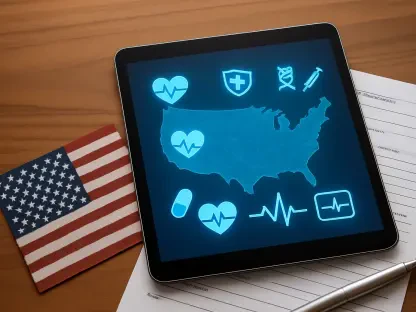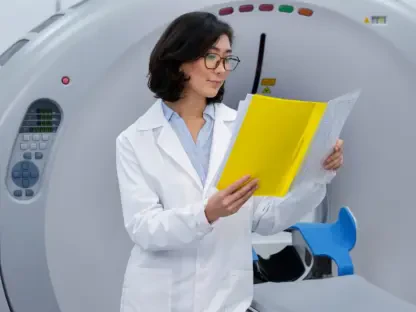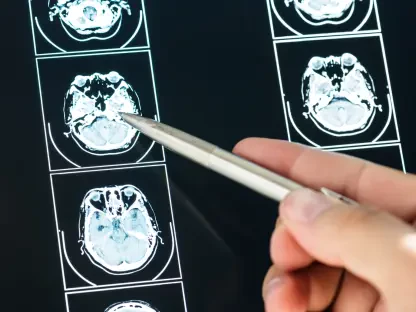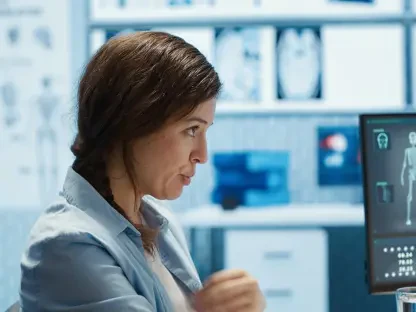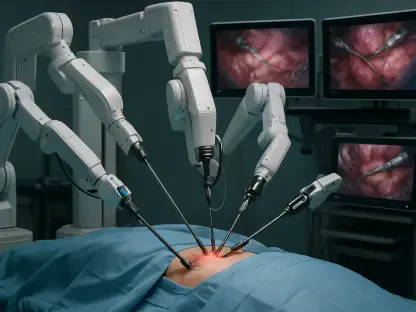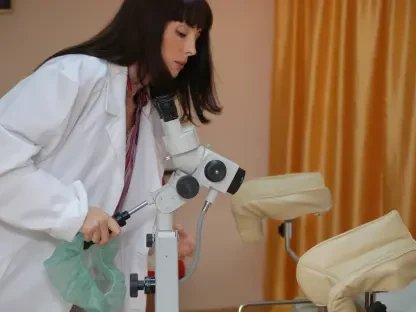The rise of telehealth has rapidly reshaped the landscape of healthcare delivery. Accelerated by the COVID-19 pandemic, this innovative approach has become essential, offering safe and remote alternatives for medical care. Medical assistants, integral to the healthcare system, are navigating this transformation with adaptability and expanded roles. Their flexibility is crucial for coordinating virtual appointments, managing digital records, and supporting both patients and healthcare providers in a tech-driven environment, thus highlighting their significant contributions to maintaining continuous and effective care.
The Transformation and Growth of Telehealth
Telehealth’s ascent from a supplementary care method to a primary mode of healthcare delivery has revolutionized patient access and convenience. Technological advancements and supportive regulations have further bolstered its adoption. No longer confined to in-person visits, healthcare services now extend to remote consultations, diagnostics, and follow-ups, transforming how and when patients receive care. The seamless integration of high-speed internet, secure video conferencing platforms, and smartphone applications is pivotal to this transformation.
This shift gained momentum during the pandemic, a period that underscored the necessity of remote care solutions. With physical distancing measures and lockdowns in place, telehealth emerged as a lifeline, facilitating essential medical services safely from home. Even post-pandemic, the preference for telehealth continues, driven by its convenience and efficiency. Insurers and regulatory bodies have also made significant strides, expanding coverage and aligning policies to ensure telehealth remains an accessible and affordable option.
Benefits and Challenges of Telehealth
Telehealth offers significant conveniences, saving time and eliminating the need for travel, which is particularly beneficial for those in rural or underserved regions. Patients can schedule and attend appointments without the hassle of commuting, resulting in decreased absenteeism and improved health outcomes. Healthcare providers can manage schedules more efficiently, optimizing workflows and enhancing their ability to attend to more patients daily.
However, the rapid adoption of telehealth has brought forth certain challenges. Not all patients find digital tools intuitive, with older adults and those less digitally literate facing substantial hurdles. Ensuring these individuals can navigate telehealth platforms effectively requires dedicated support and continuous patient education. Additionally, technical issues such as unreliable internet connections, audio glitches, and platform incompatibility can disrupt the efficiency of virtual visits, posing obstacles that both providers and patients must overcome.
The Evolving Role of Medical Assistants
Medical assistants’ roles have expanded significantly with the rise of telehealth. Traditionally involved in in-person patient care, they now manage digital appointments, assuming responsibilities that ensure the seamless execution of virtual care. Their tasks begin well before the actual appointment, involving patient scheduling, insurance verification, and updating medical histories to ensure all necessary information is readily available for healthcare providers.
Pre-visit logistics have become a core responsibility, with medical assistants playing a crucial role in preparing patients for virtual consultations. They check if patients have access to the required technology and understand how to use it, addressing any preliminary concerns to create a comfortable and efficient telehealth experience. This proactive engagement is vital for the overall effectiveness of telehealth, ensuring that both patients and providers can make the most of each virtual visit.
Patient Education and Technical Troubleshooting
Medical assistants are now pivotal in educating patients about telehealth platforms, guiding them through the technology, and addressing any concerns. Their role in demystifying digital tools ensures smoother patient experiences, reducing the anxiety or confusion that might arise from unfamiliarity with virtual healthcare systems. They provide step-by-step instructions on logging into telehealth platforms, using features, and navigating any initial technical difficulties.
Technical troubleshooting has become a routine task for medical assistants. They assist patients with logging in, resolving internet connectivity issues, and troubleshooting unfamiliar video platforms to ensure successful telehealth sessions. This support extends to addressing real-time problems during consultations, enabling a seamless experience for both patients and healthcare providers. Their expertise not only enhances the efficiency of telehealth services but also elevates patient confidence in utilizing these modern healthcare solutions.
Documentation and Digital Record Management
Accurate documentation during and after virtual visits is essential for continuity of care. Medical assistants have adapted to managing electronic health records (EHR) within telehealth frameworks, emphasizing the importance of detailed and precise record-keeping. This adaptation is crucial as it ensures all patient interactions, diagnoses, and treatment plans are meticulously recorded, providing healthcare providers with comprehensive and up-to-date patient information.
The integration of digital records with telehealth platforms highlights the administrative efficiency required from medical assistants. They must ensure that each virtual consultation is well-documented and that pertinent information is accurately captured and easily accessible. This streamlined process is fundamental for maintaining cohesive care, facilitating follow-ups, and ensuring patients receive consistent and high-quality healthcare services, irrespective of the consultation medium.
Training and Education for Telehealth Competency
Standardized training programs have become crucial for medical assistants to gain proficiency in telehealth. Mastery of video conferencing software, EHR integration, and secure messaging portals is essential. These skills ensure that medical assistants can efficiently manage telehealth appointments, maintain accurate records, and communicate effectively with both patients and healthcare providers, making the entire process more seamless and productive.
Technical proficiency is vital, involving an understanding of system requirements, internet reliability, and data security protocols. Medical assistants must also familiarize themselves with remote monitoring devices to maintain effective telehealth practices. This comprehensive knowledge base is essential for addressing any technological issues that might arise during virtual consultations, ensuring that telehealth services are consistent, reliable, and secure for all users.
Effective Communication in Virtual Settings
In telehealth, clear and empathetic communication becomes crucial, as non-verbal cues are limited. Medical assistants must hone their skills in active listening and articulate communication to ensure effective patient interaction. Emphasizing these aspects fosters a trustworthy and supportive environment, essential for addressing patient concerns and ensuring they fully understand their health conditions and treatment plans despite the physical separation.
Continuous learning and adaptation are necessary for medical assistants to keep up with technological advancements and regulatory changes. This commitment to lifelong learning is pivotal in maintaining their competency in telehealth settings, ensuring they are always equipped with the latest knowledge and best practices. By staying updated, medical assistants can adapt to new tools, methodologies, and policies, thereby maintaining a high standard of care and remaining integral to the ever-evolving landscape of digital healthcare.
Future Prospects: Digitization and AI Integration
The future of healthcare will involve increased digitization and AI integration. Medical assistants will interact with AI tools that streamline administrative tasks and complement their roles, shifting toward more data management and patient advocacy responsibilities. AI-powered systems like chatbots and health trend monitoring tools will enhance the efficiency of medical assistants, allowing them to focus on more complex and personalized patient care.
As these technologies evolve, medical assistants will need to stay abreast of the latest developments to maximize their utility. By leveraging AI and other digital tools, they can handle routine administrative duties more effectively, leaving more time for direct patient interaction and support. This shift not only enhances the overall efficiency of healthcare delivery but also elevates the role of medical assistants within the system, positioning them as critical components of a modern, digitized healthcare environment.
Team-Based Care Coordination
Medical assistants will increasingly function as liaisons in team-based care models, coordinating between telehealth providers, clinics, and specialists. This role is paramount for ensuring seamless patient care integration, facilitating smooth transitions between different stages of care, and ensuring that all healthcare providers involved are well-informed and synchronized in their efforts. By maintaining clear communication and accurate records, medical assistants help build a cohesive network of care that benefits both patients and providers.
Acting as advocates and guides for patients navigating the complex healthcare system, medical assistants will take on new responsibilities that go beyond their traditional roles, enhancing the overall patient experience. They will help patients understand their health conditions, treatment options, and follow-up steps, ensuring clarity and confidence in their healthcare journey. This evolving role underscores the importance of medical assistants in not only facilitating care but also in empowering and educating patients within a technologically advanced healthcare framework.
Sustained Adaptability in an Evolving Landscape
The rapid ascent of telehealth has dramatically transformed the healthcare delivery landscape. Propelled by the COVID-19 pandemic, this innovative method has become indispensable, providing secure and remote options for medical care. Medical assistants, who play a vital role in the healthcare system, are adapting to this shift with increased responsibilities and flexibility. Their adaptability is key in scheduling virtual appointments, handling digital records, and assisting both patients and healthcare providers in a technology-driven setting. This evolution underscores their critical contributions to maintaining continuous and effective care, ensuring that patients receive the necessary attention even from a distance. As telehealth continues to evolve, the role of medical assistants expands, demonstrating their importance in a modernized healthcare framework. Their ability to bridge the gap between traditional in-person care and remote healthcare services emphasizes their integral role in the future of medical care delivery.



